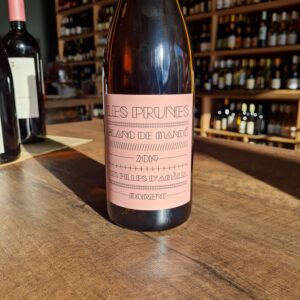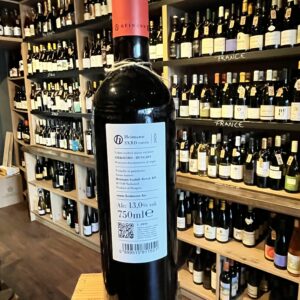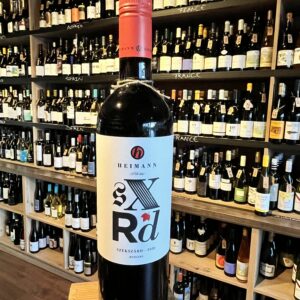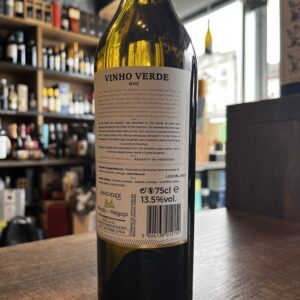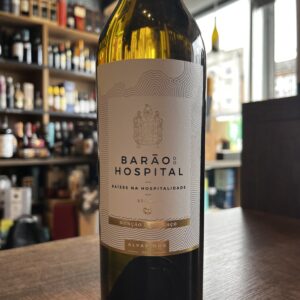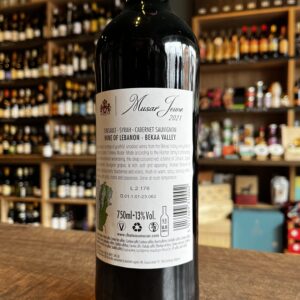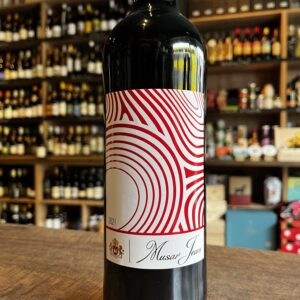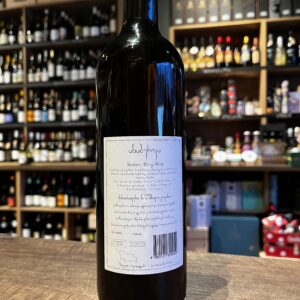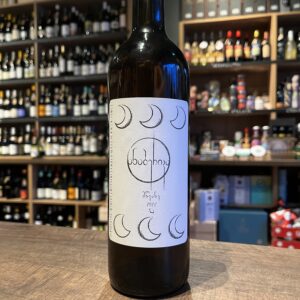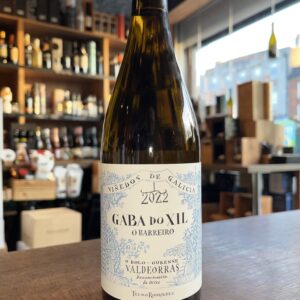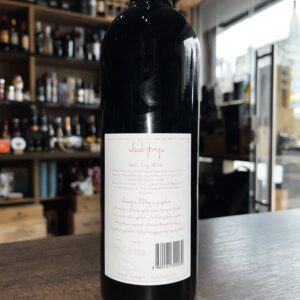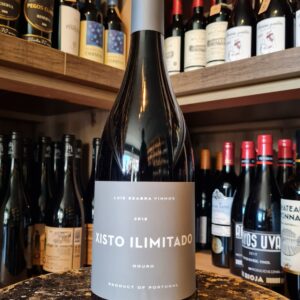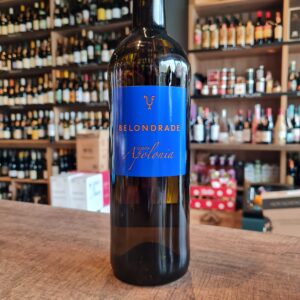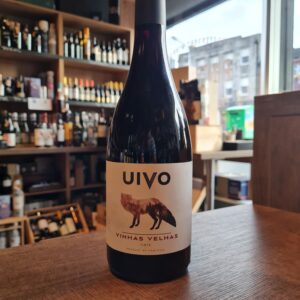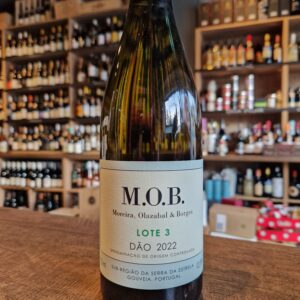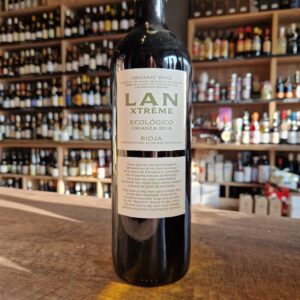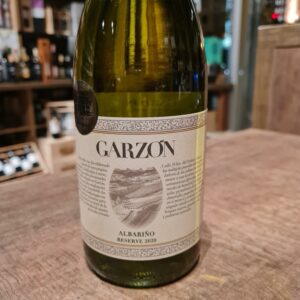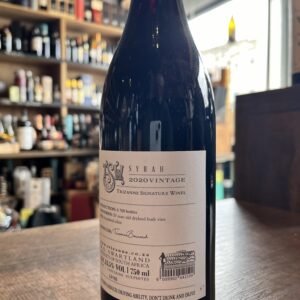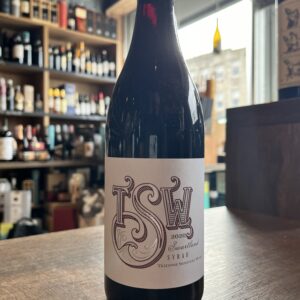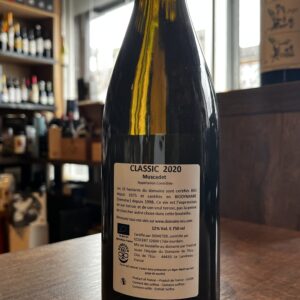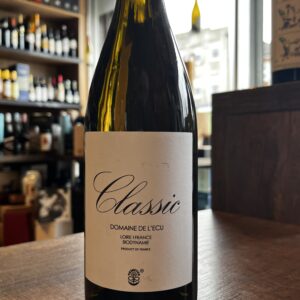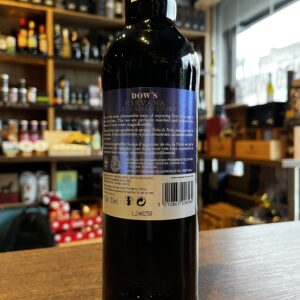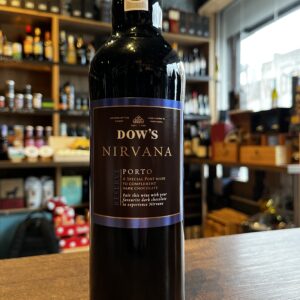-
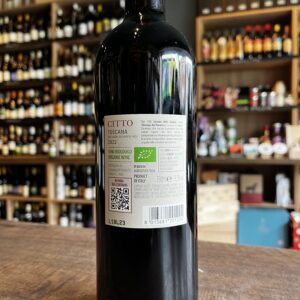
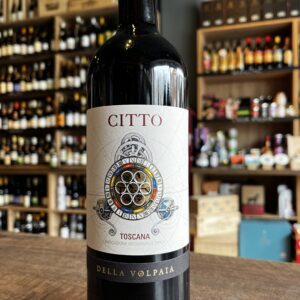 Castello di Volpaia overlooks the village of Radda in Chianti. The town was built in the 11th century as a fortified village on the border of Florence and Sienna. Although only part of the original protective walls and two of its six towers are still standing, the medieval layout and buildings within the village are still intact, making Volpaia one of the best preserved villages of its period. Just as it has been for the last 900 years, the entire village is intimately involved in the production of wine and olive oil. The cellars, bottling plant, barrels and olive press are nestled within the original stone walls that have been carefully restored by owners Carlo Mascheroni and Giovanella Stianti Mascheroni and their children, Nicolo and Federica. The nearly 114 acres of vineyards owned by Castello di Volpaia are at 1,300-2,130 feet above sea level, making Volpaia the highest winery in the Chianti region. The land is comprised of soils consisting largely of sandstone and a sedimentary rock from the Pliocene era. Citto is made from a selection of the best grapes from our IGT vineyards in the Chianti Classico and Maremma areas In the Tuscan dialect Citto means young boy. As from the land in comes from Citto is the young boy of Volpaia.As in the French tradition of the great Bordeaux Chateaux Chateau Mouton Rotschild has Mouton Cadet and Chateau Cheval Blanc has Petit Cheval, the same way Castello di Volpaia has his Citto. Pair with red meats and charcuterie
Castello di Volpaia overlooks the village of Radda in Chianti. The town was built in the 11th century as a fortified village on the border of Florence and Sienna. Although only part of the original protective walls and two of its six towers are still standing, the medieval layout and buildings within the village are still intact, making Volpaia one of the best preserved villages of its period. Just as it has been for the last 900 years, the entire village is intimately involved in the production of wine and olive oil. The cellars, bottling plant, barrels and olive press are nestled within the original stone walls that have been carefully restored by owners Carlo Mascheroni and Giovanella Stianti Mascheroni and their children, Nicolo and Federica. The nearly 114 acres of vineyards owned by Castello di Volpaia are at 1,300-2,130 feet above sea level, making Volpaia the highest winery in the Chianti region. The land is comprised of soils consisting largely of sandstone and a sedimentary rock from the Pliocene era. Citto is made from a selection of the best grapes from our IGT vineyards in the Chianti Classico and Maremma areas In the Tuscan dialect Citto means young boy. As from the land in comes from Citto is the young boy of Volpaia.As in the French tradition of the great Bordeaux Chateaux Chateau Mouton Rotschild has Mouton Cadet and Chateau Cheval Blanc has Petit Cheval, the same way Castello di Volpaia has his Citto. Pair with red meats and charcuterie -
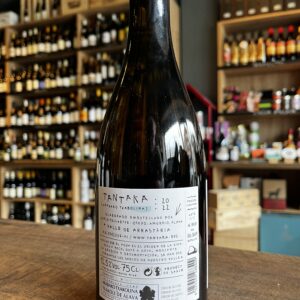
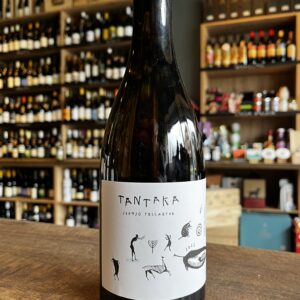 Tantaka is a white wine aged on lees made with the Hondarribi Zuri variety in the D.O. Arabako-txakolina (Basque Country) by Juanjo Tellaetxe. Juanjo Tellaetxe which happens to be a priest and a shepherd made his dream a reality when he implemented his work philosophy in the Arrastaria Valley vineyards (Álava) to make honest wines with a strong local character. To do that, the Tantaka winery is committed to using native varieties, cultivated in an environmentally-respectful way and with minimum intervention in the winery. The soils are characterised by their alluvial and semi-deep character, with a climate that ranges from Atlantic to continental, depending on the vintage Pair it with seafood, baked fish, vegetables and pork.
Tantaka is a white wine aged on lees made with the Hondarribi Zuri variety in the D.O. Arabako-txakolina (Basque Country) by Juanjo Tellaetxe. Juanjo Tellaetxe which happens to be a priest and a shepherd made his dream a reality when he implemented his work philosophy in the Arrastaria Valley vineyards (Álava) to make honest wines with a strong local character. To do that, the Tantaka winery is committed to using native varieties, cultivated in an environmentally-respectful way and with minimum intervention in the winery. The soils are characterised by their alluvial and semi-deep character, with a climate that ranges from Atlantic to continental, depending on the vintage Pair it with seafood, baked fish, vegetables and pork. -
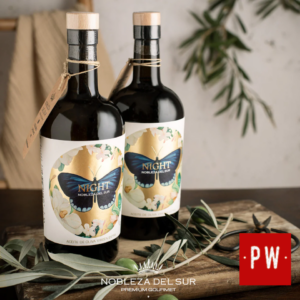 Located in the fertile area of Jaen in the province of Andalucia, known since ancient times as Olive Paradise, Nobleza del Sur has been cultivating the olive for more than three generations. Today the company is involved in the complete process of production from cultivation, harvesting, processing and storage, to packaging and marketing. Each year they select the best fruit of their family farms and carefully harvest by hand at the optimum moment of ripeness to obtain the best natural olive juice. The olives are transported to their own nearby mill where the oil is extracted at low temperature with the latest machinery under strict quality control. The company uses sustainable methods and environmentally friendly production resulting in exceptional quality extra virgin olive oil for the most discerning palates.
Located in the fertile area of Jaen in the province of Andalucia, known since ancient times as Olive Paradise, Nobleza del Sur has been cultivating the olive for more than three generations. Today the company is involved in the complete process of production from cultivation, harvesting, processing and storage, to packaging and marketing. Each year they select the best fruit of their family farms and carefully harvest by hand at the optimum moment of ripeness to obtain the best natural olive juice. The olives are transported to their own nearby mill where the oil is extracted at low temperature with the latest machinery under strict quality control. The company uses sustainable methods and environmentally friendly production resulting in exceptional quality extra virgin olive oil for the most discerning palates. -
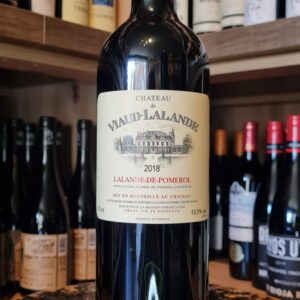 Chateau Viaud Lalande is a small-scale venture of the Durand – Teyssier family who have been making wine in the village of Puisseguin, appellation of Lalande de Pomerol, for three generations. 1.5 hectares of vineyards adjoining the Chateau were planted by Philippe Durand – Teyssier back in the 60’s. Typically for the region, those are mostly Merlot and Cabernet Franc well suited to the local, clay dominated soils. Since 2007 Philippe has handed over the wine making and day-to-day running of the property to his son Thomas. Having previously worked in prominent 1er and Grand Cru Classé estates in Saint Emilion (Château Belair, Château Cadet Bon), Thomas is continuing family tradition, with clear focus on quality. Annual production: 9000 bottles.
Chateau Viaud Lalande is a small-scale venture of the Durand – Teyssier family who have been making wine in the village of Puisseguin, appellation of Lalande de Pomerol, for three generations. 1.5 hectares of vineyards adjoining the Chateau were planted by Philippe Durand – Teyssier back in the 60’s. Typically for the region, those are mostly Merlot and Cabernet Franc well suited to the local, clay dominated soils. Since 2007 Philippe has handed over the wine making and day-to-day running of the property to his son Thomas. Having previously worked in prominent 1er and Grand Cru Classé estates in Saint Emilion (Château Belair, Château Cadet Bon), Thomas is continuing family tradition, with clear focus on quality. Annual production: 9000 bottles. -
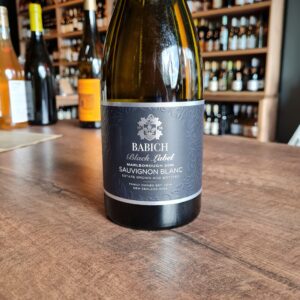 The Babich family hails from Croatia and first bought land in New Zealand in 1916. The winery is now in its third generation. Fruit for this wine comes from a variety of its estate-owned vineyards which are sustainable or organic. Most of the juice for this wine is fermented in stainless steel with a small percentage in old oak. Crafted with food in mind-weighty, ripe, tropical fruit, flavoured style, rich and rounded. Pair it with veal, seafood (oysters) or a chicken dish.
The Babich family hails from Croatia and first bought land in New Zealand in 1916. The winery is now in its third generation. Fruit for this wine comes from a variety of its estate-owned vineyards which are sustainable or organic. Most of the juice for this wine is fermented in stainless steel with a small percentage in old oak. Crafted with food in mind-weighty, ripe, tropical fruit, flavoured style, rich and rounded. Pair it with veal, seafood (oysters) or a chicken dish. -
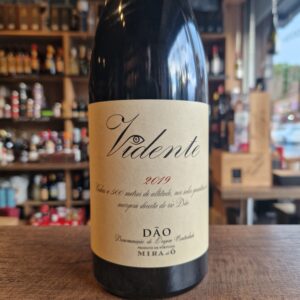 This wine rises from 500 meters above sea level in the granite soils of the right bank of the Dão. These low yield vines are about 30 years old and produce high quality grapes of the varieties Jaen, Alfrocheiro, Tinta Pinheira, Tinta Roriz and Touriga Nacional. This wine is a very personal vision over the Dão and its wines, enhancing the elegance and freshness that are natural to this region. True value in wine. Food orientated but aren't all the wines?
This wine rises from 500 meters above sea level in the granite soils of the right bank of the Dão. These low yield vines are about 30 years old and produce high quality grapes of the varieties Jaen, Alfrocheiro, Tinta Pinheira, Tinta Roriz and Touriga Nacional. This wine is a very personal vision over the Dão and its wines, enhancing the elegance and freshness that are natural to this region. True value in wine. Food orientated but aren't all the wines? -
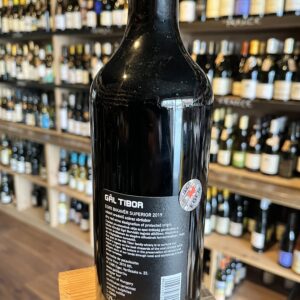
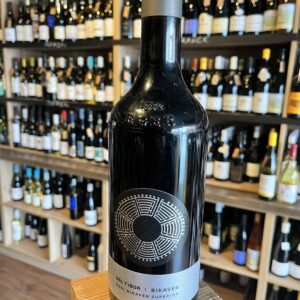 The 1552 Siege of Eger became an emblem of Hungarian heroism when the castle was successfully defended against the united forces of the two greatest Ottoman troops. When accounted for the defeat of their 20-fold army, the Ottoman leaders claimed the Hungarians - including women - fought with such an unparalleled courage they must have had drank the bull’s blood. This gave the name to the region’s emblematic red blend, Egri Bikavér (bull’s blood of Eger). Every bottle is embossed with “1552 Eger". This wine is the truest representation of the legendary Egri Bikavér. Cool climate, volcanic soil with the combination of the best sites in Eger give rise to the fresh, spicy, ripe, vibrant fruits with a touch of leafiness from firm but well integrated, round tannins. Let it explode untamed out of a slightly chilled bottle. The founder of the winery, Tibor Gál was asked by none other than Ludovico Antinori himself to join Ornellaia in 1989 where he soon became the chief winemaker. One of his greatest achievements was the 1998 Ornellaia which was voted best wine in the world by Wine Spectator in 2001. Meanwhile Marchese Incisa della Rocchetta, the man behind Sassicaia, partnered with Gál and together they founded their winery in Eger. Tibor Gál jnr. is in charge today with no less talent. His Bikavér blends are the most honest representations of the volcanic terroir of Eger. Vibrancy, elegance and finesse define the identity of all his wines. I am sure his dad would have been extremely proud to have seen his son become the pioneer of a new era of Egri Bikavér.
The 1552 Siege of Eger became an emblem of Hungarian heroism when the castle was successfully defended against the united forces of the two greatest Ottoman troops. When accounted for the defeat of their 20-fold army, the Ottoman leaders claimed the Hungarians - including women - fought with such an unparalleled courage they must have had drank the bull’s blood. This gave the name to the region’s emblematic red blend, Egri Bikavér (bull’s blood of Eger). Every bottle is embossed with “1552 Eger". This wine is the truest representation of the legendary Egri Bikavér. Cool climate, volcanic soil with the combination of the best sites in Eger give rise to the fresh, spicy, ripe, vibrant fruits with a touch of leafiness from firm but well integrated, round tannins. Let it explode untamed out of a slightly chilled bottle. The founder of the winery, Tibor Gál was asked by none other than Ludovico Antinori himself to join Ornellaia in 1989 where he soon became the chief winemaker. One of his greatest achievements was the 1998 Ornellaia which was voted best wine in the world by Wine Spectator in 2001. Meanwhile Marchese Incisa della Rocchetta, the man behind Sassicaia, partnered with Gál and together they founded their winery in Eger. Tibor Gál jnr. is in charge today with no less talent. His Bikavér blends are the most honest representations of the volcanic terroir of Eger. Vibrancy, elegance and finesse define the identity of all his wines. I am sure his dad would have been extremely proud to have seen his son become the pioneer of a new era of Egri Bikavér. -
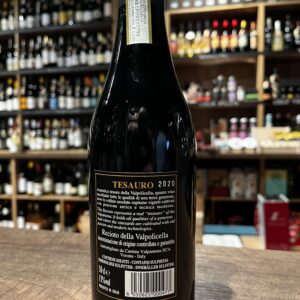
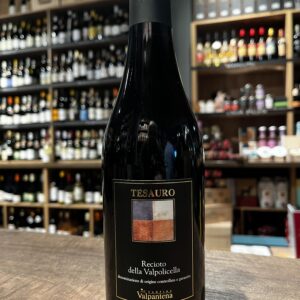 The Torre del Falasco wines are the standard bearers of this co-operative, situated in the Valpantena, northeast of Verona. Known as the ’valley of god’ to the ancient Greeks, this area is well-known for its high quality red wines, due partly to the soils but also because of the cool breeze that blows down the valley from the foothills of the Dolomites. Cantina Valpantena Tesauro Recioto della Valpolicella is the perfect dessert wine and pairs well with chocolate, cheese, and other sweet treats. With its unique blend of grapes and traditional winemaking techniques, this wine is sure to impress even the most discerning of wine lovers.
The Torre del Falasco wines are the standard bearers of this co-operative, situated in the Valpantena, northeast of Verona. Known as the ’valley of god’ to the ancient Greeks, this area is well-known for its high quality red wines, due partly to the soils but also because of the cool breeze that blows down the valley from the foothills of the Dolomites. Cantina Valpantena Tesauro Recioto della Valpolicella is the perfect dessert wine and pairs well with chocolate, cheese, and other sweet treats. With its unique blend of grapes and traditional winemaking techniques, this wine is sure to impress even the most discerning of wine lovers.


